Red Sandalwood is a well-known long-time venture involving high profits. It is also known as “Erra Chandanam” in Telugu, and “Lal Chandan” in Hindi. Red Sandalwood’s distinctive, calming scent is well-known among aromatherapy and essential oils fans. Native Sandalwood from India and Hawaii was almost wiped out in the 1800s due to its highly sought-after scent.
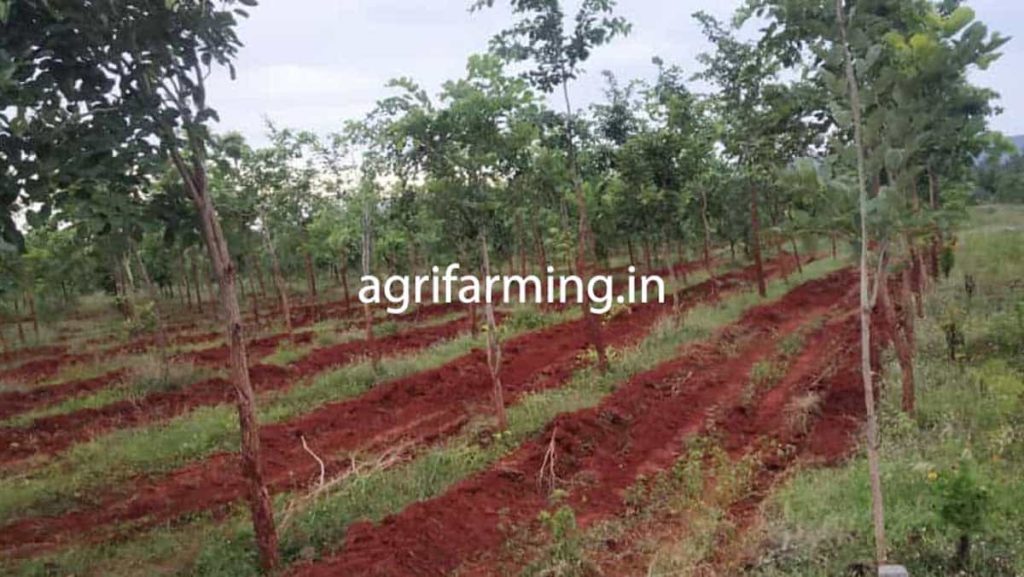
Due to Hawaii’s greedy rulers, many of the island’s agricultural workforce was forced to cultivate and gather only Sandalwood. People on the island of Hawaii were forced to live in starvation for many years because of this. Sandalwood was a problem in many parts of India because of the need to supply merchants. Let’s check out a way to earn crores with Red Sandalwood farming.
What is a Sandalwood plant?
Sandalwood is a big shrub or tree that can grow in zones 10-11. Most sandalwood plant species are indigenous to India, Hawaii, or Australia, even though the genus itself has over a hundred different species. Sandalwood may grow up to 30 feet tall, depending on the species and location of the tree. Arid, sandy, or weak clay soils are common habitats for these plants. Sandalwood trees can withstand severe winds, dryness, sea spray, and extreme heat. However, even though they prefer full sun, they may thrive in partial shade as well.
Hedges, specimen plants, and shade trees all make good use of this versatile plant. The fragrant essential oil of Sandalwood is extracted from the plant’s flowers and wood. A plant’s natural essential oils become more potent as it ages, therefore, harvesting occurs when it is between ten and thirty years old. Sandalwood essential oil has anti-inflammatory, antibacterial, and anti-spasmodic properties and a pleasant aroma.
Acne and wounds can be healed with the help of this natural medicine. Soap, shampoo, and a remedy for dandruff and lice were all common uses of Sandalwood in India, Hawaii, and Australia.
Why Red Sandalwood has the highest demand?
The majority of demand for Red Sandalwood originates from nations such as China, Japan, Myanmar, and others in East Asia. Red Sandalwood has medicinal properties. According to the Institute of Wood Science and Technology, when used topically for inflammations, headaches, bilious affections, and skin disorders, the wood has a cooling effect and aids in treating headaches, boils, fever, skin diseases, scorpion stings, and to enhance vision.
In case you missed it: Red Sandalwood Plantation; Profit; Yield – A Full Guide
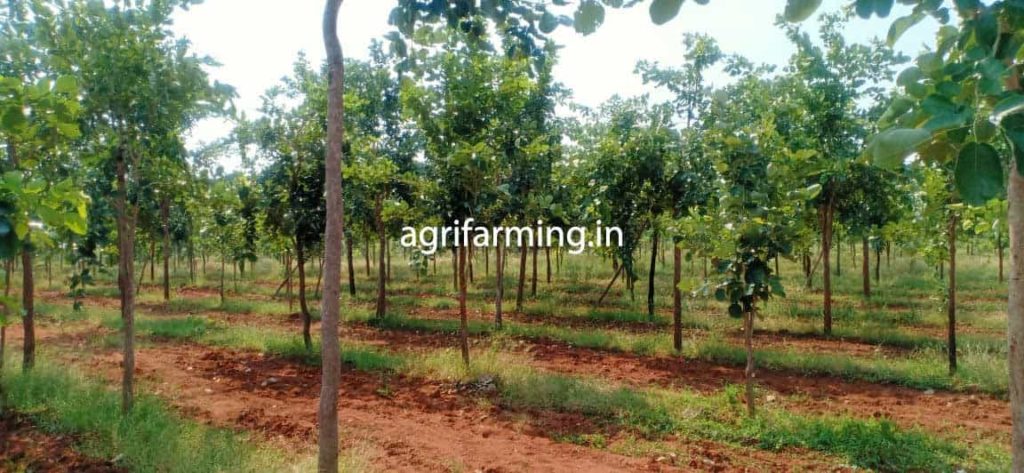
It is an excellent raw material for musical instruments and luxury furnishings. Additionally, it produces Santa line dye, which is used to color foods and medical products, and the bark and wood extracts are believed to have a variety of therapeutic benefits.
Earn crores with Red Sandalwood farming
Climate required for Red Sandalwood
Red Sandalwood trees thrive in practically any sort of soil, climate, or temperature. Red Sandalwood tree cultivation needs hot weather and thrives in humid climatic conditions. Additionally, temperatures between 12° to 35°C are required for Red Sandalwood tree growth. It is the ideal temperature for the Red Sandalwood tree. This sandalwood tree species thrives between 600 and 1050 meters in elevation.
Soil requirements for growing Red Sandalwood
To cultivate Red Sandalwood trees, you will need well-drained soils with high organic content. Red Sandalwood trees thrive in red sandy loam soils, which provide a high yield crop. A soil test is required to determine whether or not the necessary nutrients for sandalwood cultivation are present in the soil. Red Sandalwood tree cultivation demands a soil pH of 6.5 to 7.5 with an alkaline component.
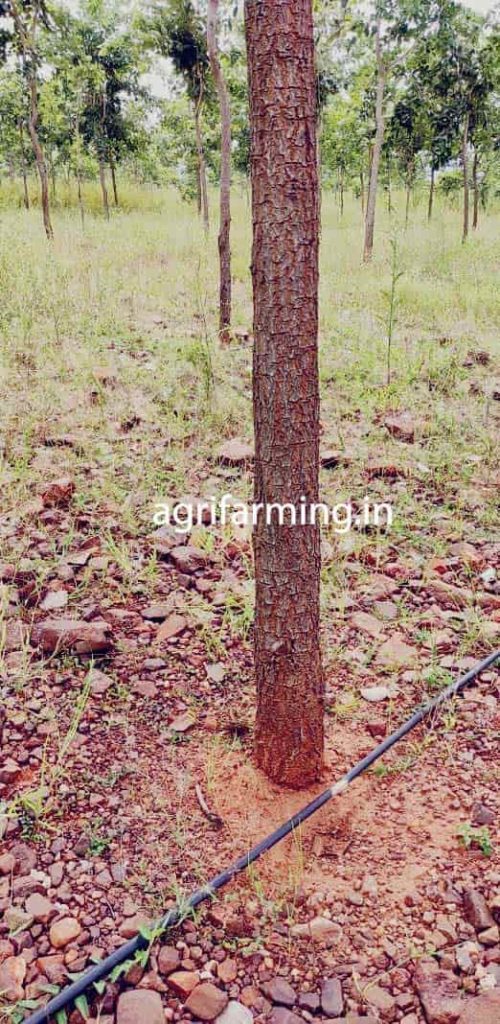
Plough the land well before beginning the Red Sandalwood tree planted to provide excellent tilth and weed-free soil. Additionally, prepare the soil so that water may quickly flow from the drain during periods of severe rain or flooding. Sandalwood cultivation can be accomplished by seed or vegetative tissue culture.
Seeds vs seedlings
Red Sandalwood tree cultivation is mainly achieved by seed planting. During August and March, you may gather the seeds from Red Sandalwood trees between 15 and 20 years old. The seeds are thoroughly cleaned and dried in the sun before being geminated on nursery beds. If you do not wish to cultivate Red Sandalwood from seeds, you can buy them in the market and plant them using an appropriate sandalwood planting technique. However, use caution while purchasing from the market.
There are several commercial and government nurseries on the market from which you can purchase baby sandalwood plants and cultivate them on your land. However, obtaining them from a reputable supplier is smart. Red Sandalwood plants should be obtained from a legitimate and certified source if they are to be grown by planting sandalwood baby plants.
In case you missed it: Sandalwood Farming Project Report, Cost and Profit

While Red Sandalwood is the most valued plant in India, commercial cultivation requires a more significant number of trees. Typically, a single baby plant costs between Rs. 500 and Rs. 1000, but if you want to grow many plants on your farm, you may get a baby plant for as little as Rs. 100 from a trusted supplier.
Fertilizer applications
It is recommended that each plant get around 10–15 kg of FYM each year and 150 g of NPK. An ideal method for applying fertilizer is to make circular trenches around the plant about 60 centimeters in diameter. At the end of February, use the total dosage of P and K and one-third of the N. It is recommended that the leftover N be administered twice, first in June–July and again in October–November.
Following the application of inorganic fertilizers, watering is usually recommended. One month after planting, the gap-filling process begins. Weeding is done by hand when required, especially just before manuring. Many tillage is done to loosen the soil in and around the basin.

Irrigation required for Red Sandalwood cultivation
You can cultivate sandalwood trees using the drip irrigation technique if you have a restricted water supply. Because sandalwood cultivation requires less water, you may apply drip irrigation every two to three weeks. Red Sandalwood tree seedlings need watering only during the hot and summer months; they do not need irrigation during rainy seasons.
Harvesting of Red Sandalwood trees
Red Sandalwood trees develop rapidly and reach maturity after 30 years, at which point they are suitable for harvesting. Due to advancements in technology, various tree cutting equipment is now available on the market; thus, you can harvest sandalwood with any of that equipment. First, the mill receives the heartwood of sandalwood trees and removes the softwood. Then, this complex Red Sandalwood is converted into powder using a machine.
Yield
Thirty tons of pods per hectare are produced by 15-year-old trees. After felling, each tree has 250 kilograms of heartwood. Thus, after 15–20 years, 150 tons of heartwood per acre is estimated.
Care required for Red Sandalwood cultivation
Semi-parasitic Red Sandalwood trees exist. Host plants’ xylem is harvested by specialized roots that connect to the host plant’s root system. A consequence of the Indian government’s decision to limit the cultivation of Red Sandalwood due to the species’ affinity for Acacia and Casuarina trees as host plants: It’s easy to care for Red Sandalwood plants since they can tolerate so many different types of growing conditions. However, for them to thrive, they need a host plant.
Red Sandalwood hosts can be legumes, shrubs, grasses, or herbs in the environment. Planting sandalwood too near to host trees is a bad idea. Most sandalwood trees need male and female plants to produce fruit and seed. Scarification of the seeds is required for the germination of sandalwood seeds. A single plant of Red Sandalwood is normally adequate for a bit of area, but if you desire to propagate seedlings, you’ll need to ensure that you have both male and female sandalwoods in your garden.
In case you missed it: Sandalwood Cultivation Information Guide
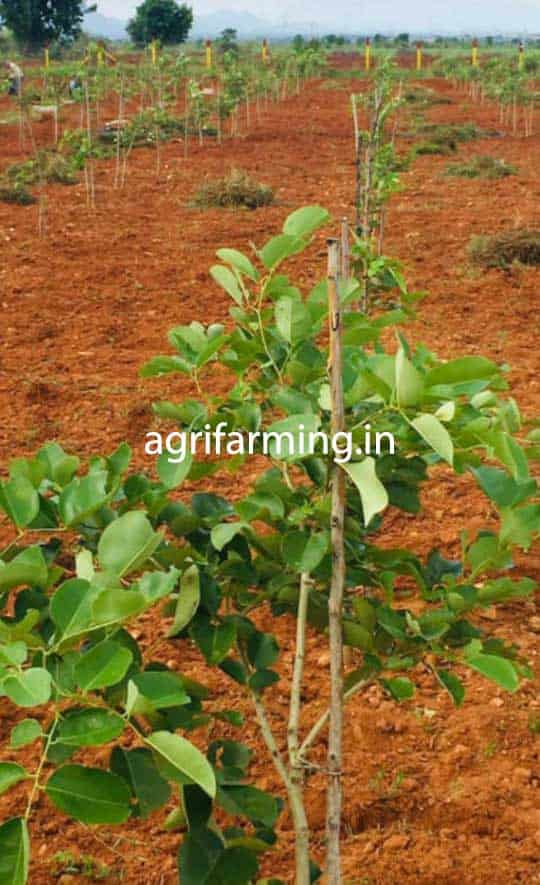
What is the height of the Red Sandalwood tree?
An adult Red Sandalwood tree may reach a height of approximately 10 meters which is about 33 feet, with leathery leaves arranged in pairs across the branches.
Profits in Red Sandalwood cultivation
An investment in sandalwood cultivation can provide enormous returns. It takes 12 to 15 years for the heartwood of the sandalwood tree to grow, and it’s ready for harvest when the tree is about eight years old. When the tree is mature, the farmer can quickly harvest 15 to 20 kg of wood every year. For this wood, the typical rate is between 3,000 and 7,000 rupees per kilogram, with some sellers asking as much as 10,000 rupees per kilogram. It costs about Rs 30 Lakh per hectare to grow Red Sandalwood for 15 years, but the returns can be from Rs 1.2 to 1.5 crores.
Do we need a license to grow Red Sandalwood?
Individuals were prohibited from cultivating Red Sandalwood until 2002. Today, it is allowed to grow trees, but it is not permitted to harvest and sell its wood. The state forest agency must provide its approval, in the form of a license, before the tree can be chopped down and the Red Sandalwood purchased.
Is Red Sandalwood good for legal business?
The international trade laws for endangered species make exporting more difficult for the legal actors. As a result, many farmers have ceased selling red sanders, while a few remain. Farmers who have just a few trees on their property are being taken advantage of by those in the business of harvesting them for a fee.
There used to be purchasers who could afford to pay Rs 40-50 crore for bulk purchases and exports and get the requisite legal approvals to export the red sanders via legal channels, but these buyers have now faded away. Previously, these bulk purchasers would purchase between 300 and 400 tons of produce from various farms at once. However, according to a source, though legal experts are still possible, other parties are expected to become involved.
In case you missed it: Organic Farming Of Medicinal Plants
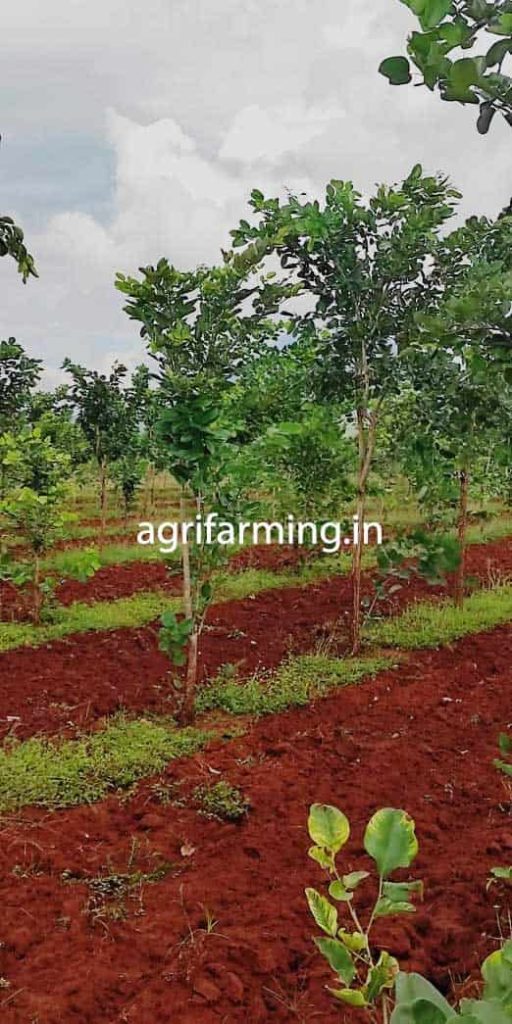
Weight of Red Sandalwood tree
After 15 years, the weight of a Red Sandalwood tree ranges from 180 kilograms to 200 kilograms. Therefore, heartwood and sapwood yield of 16 to 24 kg may be expected from a healthy 15-year-old sandalwood tree.
Frequently asked questions about Red Sandalwood
Is Red Sandalwood cultivation legal?
In recent years, the smuggling and exportation of sandalwood forced the government to prohibit the cultivation of sandalwood trees. However, sandalwood cultivation is permitted in India, although government agencies carry it out. The department strictly regulates sandalwood harvesting.
How long does Red Sandalwood take to grow?
Except in wet areas, sandal trees can thrive in any soil. To harvest sandalwood from the tree takes at least 15 to 20 years of growth. Circumference of 242 to 3 feet at chest height can be cut from a tree. After seven years, the heartwood begins to mature.
Why is Red Sandalwood costly?
Due to the danger of exploitation and inadequate regeneration. A ton of this wood now costs between Rs 80 lakhs and Rs 1 crore in the present market, but it can reach as high as Rs 2 crore in the future.
In case you missed it: Medicinal Plants Contract Farming and Advantages

How can we earn by cultivating sandalwood trees?
5000 kilograms of sandalwood may be harvested from one acre of land. While the costs of Red Sandalwood cultivation are in the region of Rs 8-10 lakh per acre, the potential profits are Rs 1.5 to 2 crore.
- Economical Aquaculture: A Guide to Low-Budget Fish Farming
- 15 Common Planting Errors That Can Doom Your Fruit Trees
- How to Make Houseplants Bushy: Effective Tips and Ideas
- Innovative Strategies for Boosting Coconut Pollination and Yield
- Pollination Strategies for Maximum Pumpkin Yield
- The Complete Guide to Chicken Fattening: Strategies for Maximum Growth
- Natural Solutions for Tulip Problems: 100% Effective Remedies for Leaf and Bulb-Related Issues
- Revolutionizing Citrus Preservation: Towards a Healthier, Greener Future
- Natural Solutions for Peony Leaf and Flower Problems: 100% Effective Remedies
- Maximizing Profits with Avocado Contract Farming in India: A Comprehensive Guide
- Natural Solutions for Hydrangea Problems: 100% Effective Remedies for Leaf and Flowers
- The Ultimate Guide to Choosing the Perfect Foliage Friend: Bringing Life Indoors
- From Sunlight to Sustainability: 15 Ways to Use Solar Technology in Agriculture
- The Ultimate Guide to Dong Tao Chicken: Exploring from History to Raising
- The Eco-Friendly Makeover: How to Convert Your Unused Swimming Pool into a Fish Pond
- Mastering the Art of Delaware Chicken Farming: Essentials for Healthy Backyard Flocks
- 20 Best Homemade Fertilizers for Money Plant: DIY Recipes and Application Methods
- How to Craft a Comprehensive Free-Range Chicken Farming Business Plan
- Brighten Your Flock: Raising Easter Egger Chickens for Beauty and Bounty
- How to Optimize Your Poultry Egg Farm Business Plan with These Strategies
- Subsidy for Spirulina Cultivation: How Indian Government Schemes Encouraging Spirulina Farmers
- Ultimate Guide to Raising Dominique Chickens: Breeding, Feeding, Egg-Production, and Care
- Mastering the Art of Raising Jersey Giant Chickens: Care, Feeding, and More
- Ultimate Guide to Raising Legbar Chickens: Breeding, Farming Practices, Diet, Egg-Production
- How to Raise Welsummer Chickens: A Comprehensive Guide for Beginners
- How to Protect Indoor Plants in Winter: A Comprehensive Guide
- Ultimate Guide to Grow Bag Gardening: Tips, Tricks, and Planting Ideas for Urban Gardeners
- Guide to Lotus Cultivation: How to Propagate, Plant, Grow, Care, Cost, and Profit
- Agriculture Drone Subsidy Scheme: Government Kisan Subsidy, License, and How to Apply Online
- Ultimate Guide to Raising Araucana Chickens: Breed Profile, Farming Economics, Diet, and Care
- Bringing Hydroponics to Classroom: Importance, Benefits of Learning for School Students
- Ultimate Guide to Raising Polish Chickens: Breed Profile, Farming Economics, Diet, and Care
- Ultimate Guide to Raising Australorp Chickens: Profile, Farming Economics, Egg Production, Diet, and Care
- Silkie Chicken Farming: Raising Practices, Varieties, Egg Production, Diet, and Care
- Sussex Chicken Farming: Raising Practices, Varieties, Egg Production, Diet and Care
- Homemade Feed Formulations for Livestock: Discover Cost-effective Starter to Finisher Feed Recipes
How to grow at home and get benefits
Very useful information for farmers. Kindly let me know where I can get Red sanders seeds and full information about cultivation as I have a coffee Estate in Perumalmalai, Kodaikanal at an altitude of 5500 feet and also a Farm in Madurai where I grow ordinary Sandlewoid trees. Can I grow in the plains or the hills? Also, let me which is more profitable, Piggary or goat farming. Thank you.
I’ve started Arecanut farm( Betal Nut ) So I want to plant Red Sandalwood tree .
Can I plant Red sandalwood tree in my Betal Nut farm. Please advice